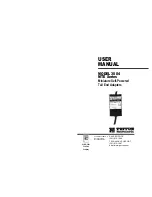
VSAM eWay Adapter User’s Guide
7
Sun Microsystems, Inc.
Chapter 1
Introducing the VSAM eWay
Welcome to the
Sun SeeBeyond eWay™ Adapter for VSAM User’s Guide
. This document
includes information about installing, configuring, and using the Sun Java Composite
Application Platform Suite VSAM eWay™ Adapter, referred to as the VSAM eWay
throughout this guide.
This chapter provides a brief overview of operations, components, general features,
and system requirements of the VSAM eWay.
What’s in This Chapter
About VSAM
on page 7
About the VSAM eWay
on page 8
What’s New in This Release
on page 8
About This Document
on page 9
Related Documents
on page 10
Sun Microsystems, Inc. Web Site
on page 11
Documentation Feedback
on page 11
1.1
About VSAM
Virtual Storage Access Method (VSAM) is one of several access methods that defines
the technique by which data is stored and retrieved. It is a GET/PUT interface used to
transfer data from a direct-access storage device (DASD) to an application program.
VSAM does not support data stored on tape.
VSAM stores data as a collection of data sets. IBM uses a collection of three data-set
organizations—sequential, indexed, and direct-access, together with the access
methods and utilities used on mainframe operating systems.
VSAM data sets must be cataloged in an integrated catalog facility (ICF) structure.
Records are arranged by an index key or by relative-byte addressing. VSAM uses direct
or sequential processing of fixed and variable-length records stored on a DASD.
VSAM also provides the following features:
Allows you to organize and access data (record management).








































